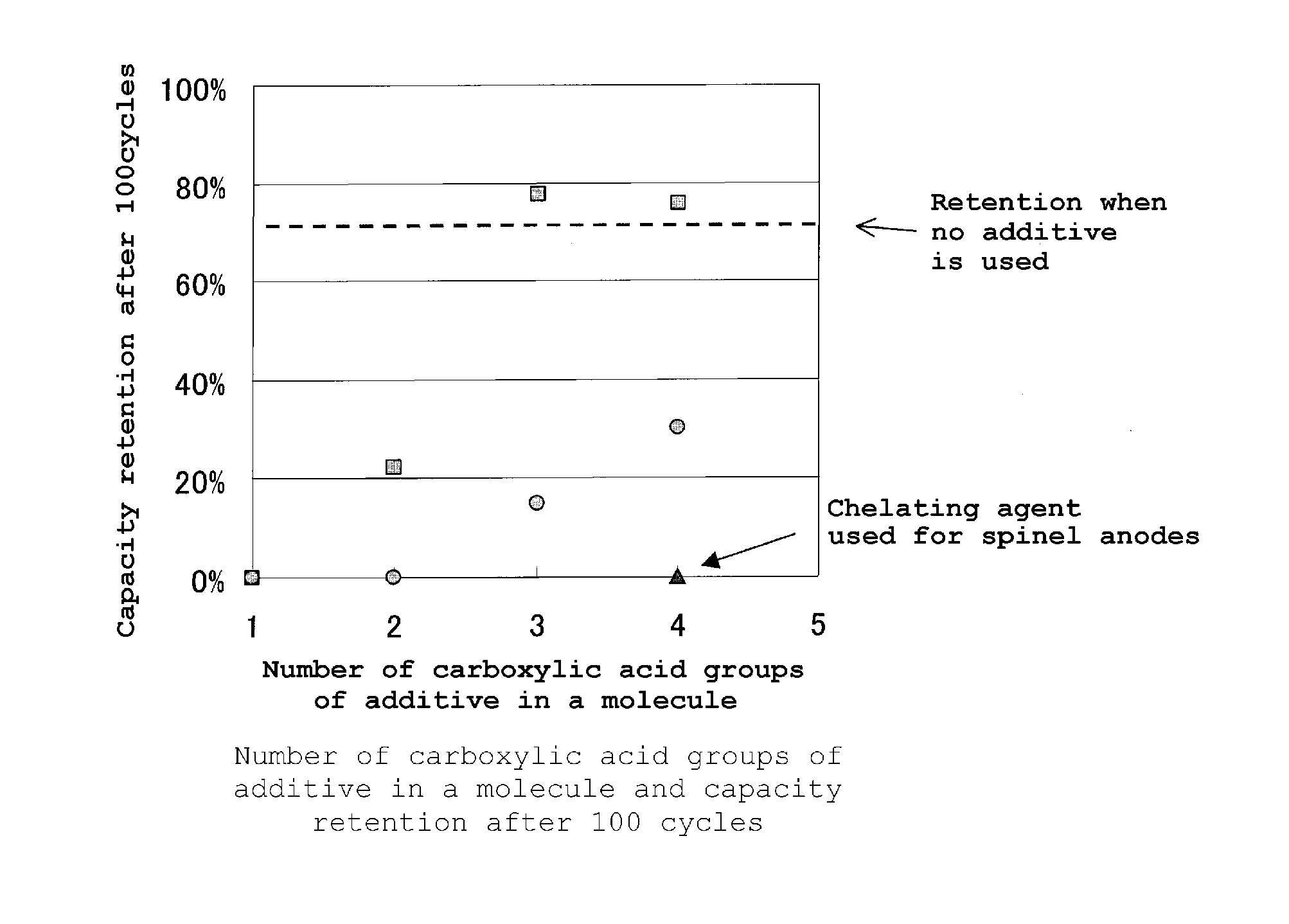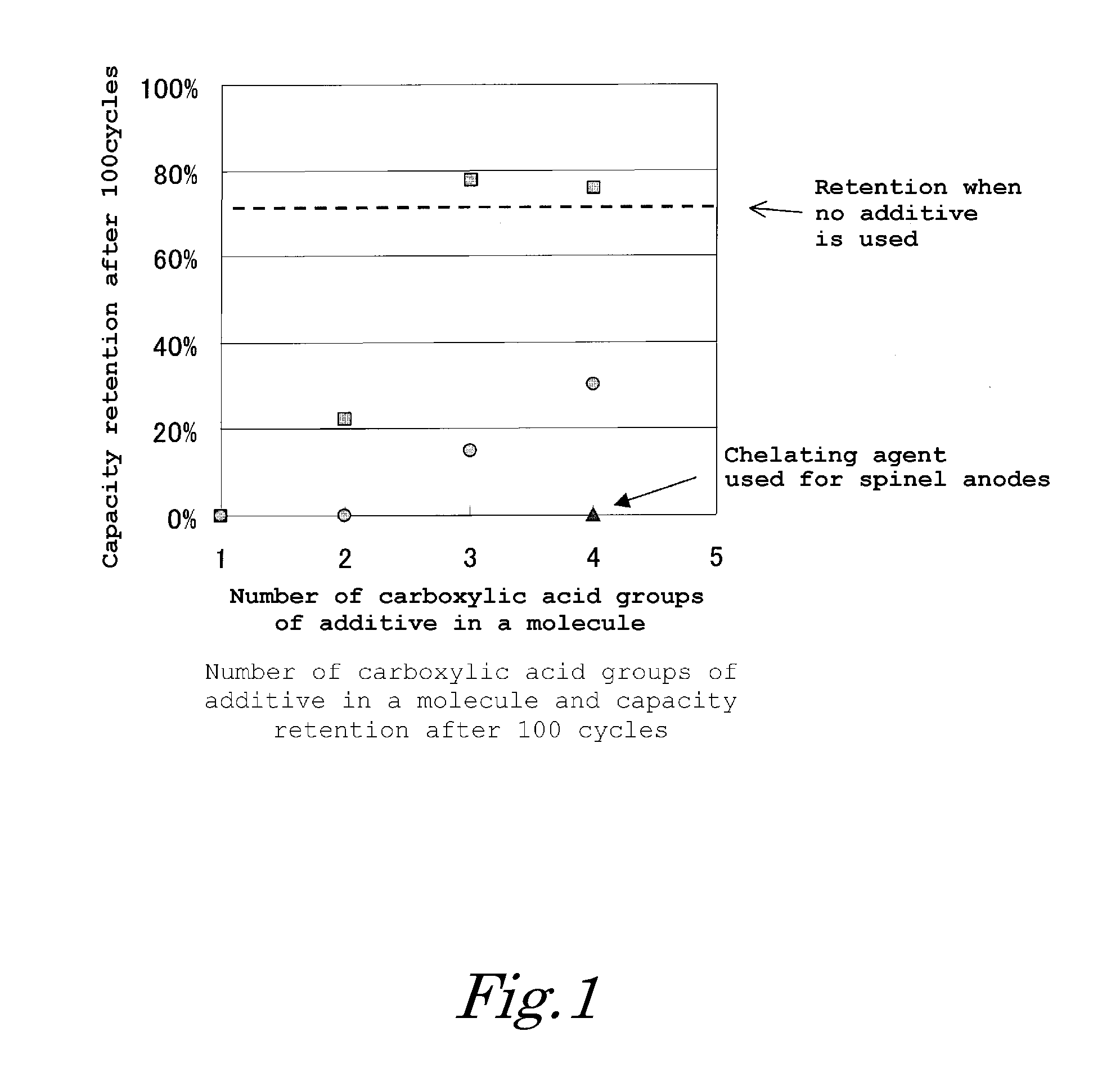Electrolytic solution for lithium ion secondary battery, and lithium ion secondary battery
- Summary
- Abstract
- Description
- Claims
- Application Information
AI Technical Summary
Benefits of technology
Problems solved by technology
Method used
Image
Examples
examples
[0034]Hereinafter, the present invention will be described in more detail with inventive examples and comparative examples. However, the present invention is not limited to those examples.
##ventive examples 1 to 7
Inventive Examples 1 to 7
[0035](Preparation of Anode) An anode slurry was prepared by blending graphite powder, acethylene black as an conductive additive and PVDF as a binder together in an mass ratio of 90:5:5, and then adding and mixing thereto N-methylpyrrolidone as a solvent. A copper foil was used as a current collector. The obtained anode slurry was applied thereto to a thickness of 30 μm, and was sufficiently dried. The slurry was dried in vacuo for 24 hours to obtain the desired anode.
[0036](Preparation of Cathode) A cathode was prepared by the following method. As a cathode active material, Li1.85Ni0.18Co0.10Mn0.87O3 (x=0.3, α=0.40, β=0.22 and γ=0.38) was used. A cathode slurry was prepared by blending the cathode active material, acetylene black as a conductive additive and PVDF as a binder together in a mass ratio of 90:5:5, and then adding and mixing thereto N-methylpyrrolidone as a solvent. An aluminum foil was used as a current collector. The obtained cathode slurry w...
PUM
 Login to View More
Login to View More Abstract
Description
Claims
Application Information
 Login to View More
Login to View More - R&D
- Intellectual Property
- Life Sciences
- Materials
- Tech Scout
- Unparalleled Data Quality
- Higher Quality Content
- 60% Fewer Hallucinations
Browse by: Latest US Patents, China's latest patents, Technical Efficacy Thesaurus, Application Domain, Technology Topic, Popular Technical Reports.
© 2025 PatSnap. All rights reserved.Legal|Privacy policy|Modern Slavery Act Transparency Statement|Sitemap|About US| Contact US: help@patsnap.com


